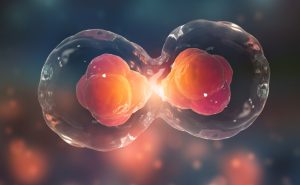The cells with high energy requirements have a high number of mitochondria. The muscles, liver and brain are organs which require constant and large amounts of energy compared to the other organs in the body, thus a larger amount of mitochondria are located there to supply the energy these organs require.
The oocyte has, by far, the largest number of mitochondria, approximately 200,000, of any cell. Heart muscle cell contains 5,000 mitochondria, liver 1,000-2,000. At least in order of magnitude, it is the most charged cell and has the highest energy demand of all. Those high energy organs are impacted more severely by energy failure.
Egg quality, the determining factor in natural conception and IVF success
It is well established that women’s reproductive success dramatically declines with age, starting in the mid- to late 30s when chromosomal abnormalities in eggs increase in number. This aberration has a profound impact on fertility because at every stage of development from egg maturation, fertilization, embryo development onward, an embryo formed from a chromosomally abnormal egg has much less potential to continue developing. High rates of chromosomal abnormalities are seen in the eggs of women who have a history of multiple miscarriages and women who have had repeated IVF cycles in which embryos were transferred but no pregnancy occurred. Egg quality impairment is also common in women with PCOS and thyroid dysfunction. For an embryo to develop into a viable pregnancy, the most important factor is having the correct number of chromosomes. Egg quality is the determining factor in IVF success as well as natural pregnancy.
High energy requirement at the critical time

A girl is born with all the eggs she will ever have in her life. After decades in a state of suspended animation, a small pool of immature eggs begins to grow approximately four months before ovulation.
In every cycle, one lead egg is selected from the pool to complete maturation. The onset of the luteinizing hormone (LH) surge before ovulation or, in ART, the hCG trigger shot leads to meiosis in the egg that results in 23 chromosomes.

The second meiotic division commences with the penetration of viable sperm. The oocyte then extrudes 23 sister chromatids resulting in a second polar body and a fertilised egg having a normal 46 chromosomes.
The production of energy for the metabolic requirements of the oocyte and early embryo development is provided solely by mitochondria. There is an increased rate of energy consumption in the mature oocyte that is essential if it is to be able to undergo normal fertilisation.
The processes that follow the fertilisation of the egg and chromosome disjunction for the second polar body extrusion all add to the increasing demand for energy. If this process fails at any stage, the result may be an egg or embryo with the incorrect number of chromosomes with an increased rate of aneuploidy, especially trisomies, as observed in the offspring of older women.
Proper oocyte maturation, the correct processing of chromosomes and implantation of embryos are all dependent on energy which is provided by ATP produced in the mitochondria. The relationship between maternal age and an increased rate of chromosomal abnormalities in embryos is likely to be a result of diminished mitochondrial activity in the egg.
Egg quality over quantity
Many women who are struggling to conceive are often told by their physicians that they have ‘old eggs.’ The ovarian reserve test often shows a low AMH level (under 1.0 ng/dl).
In my practice, I am less concerned with a client’s chronological age or test results than I am with her biological age and lifestyle. After all, all it takes is one healthy egg. Whether you choose natural conception or the IVF route, improving mitochondrial function and energy production is a critical component of fertility. When a woman is living to support her mitochondrial health, the health of her eggs can improve well into her mid-40s in many cases.
High time to be a mitochondriac
I recommend the following strategies to support oocyte mitochondrial health in women who are trying to conceive.
- The adoption of a low carbohydrate diet for metabolic advantage.
Mitochondria: The ketogenic diet–A metabolism-based therapy
- The optimization of your lipid metabolism. Shift your metabolism away from burning glucose and toward efficient fat utilization.
Lipids and oocyte developmental competence: the role of fatty acids and β-oxidation
Beta-Oxidation Is Essential for Mouse Oocyte Developmental Competence and Early Embryo Development
A medium-chain fatty acid as an alternative energy source in mouse preimplantation development
- The use of mitochondrial nutrients
The use of mitochondrial nutrients to improve the outcome of infertility treatment in older patients
Mitochondrial Dysfunction and Chronic Disease: Treatment with Natural Supplements
- An avoidance of Mitochondrial toxicity.
Large amounts of mitochondrial toxic agents cross placenta barrier
Drug toxicity & Mitochondria by Dr James Dykens
Table of Reported Drugs with Mitochondrial Toxicity
Recommended reading on mitochondria, ageing and disease
The ageing oocyte—can mitochondrial function be improved?
The contribution of mitochondrial function to reproductive aging
A mitochondrial bioenergetic etiology of disease





